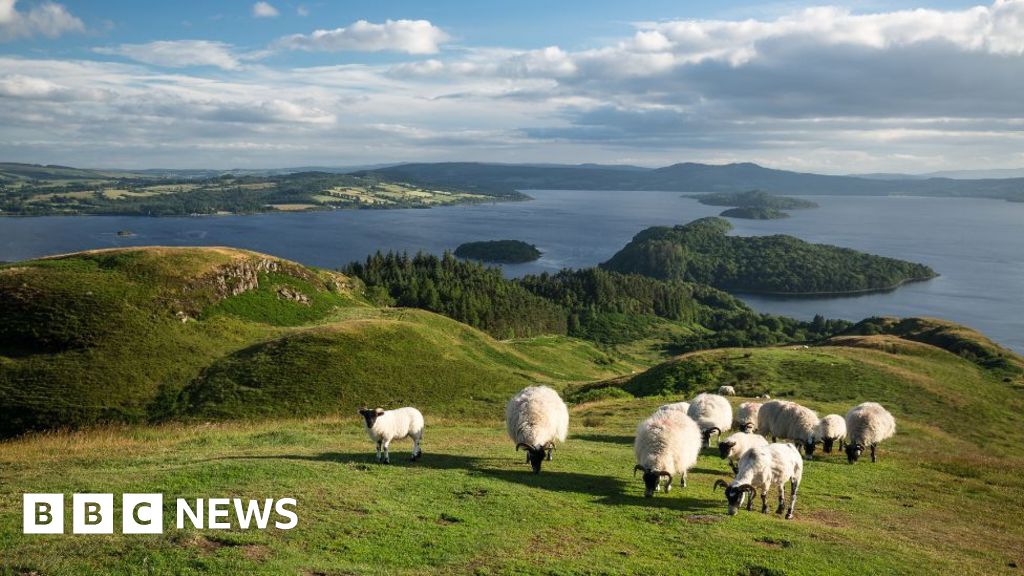November 6, 2025 — 5:00am
As a sweatpants and hoodie sort of gal, the art of dressing in a kimono is uncharted territory. And to call it an “art” is not hyperbole: there are protocols to adhere to in this ancient tradition, as well as elevated aesthetics and an eye for finer detail.
I’ve chosen a pretty blue floral material for this kimono experience, an optional extra on my 16-day tour of Japan. Although we’ll spend several nights in Kyoto – where renting kimonos to emulate the city’s famous geishas is a popular activity – this session is taking place in Hida-Takayama, in the mountainous eastern reaches of Japan’s main island of Honshu.
Spared from bombing during World War II, Takayama’s beautifully preserved old town is one of the most picturesque in Japan, with several streets of historic wooden houses and businesses dating back to the Edo period when the city thrived as a centre for merchants and craftsmen.
The town is also an ideal hub for exploring the glorious scenery of the Japanese Alps, with world-class skiing, onsen towns and the UNESCO World Heritage Shirakawa-go and its 250-year-old thatched gassho houses all within easy reach.
But while the city is increasingly popular with tourists wanting to explore beyond the Tokyo-Kyoto-Osaka golden triangle, its smaller size allows a more intimate and authentic glimpse into traditional Japan, with local crafts, gastronomy and history proudly on display.
Only two from our group have chosen to participate in the kimono activity during our free day exploring Takayama, and I welcome the company to share giggles and gasps as we are trussed and swaddled like burritos into our robes, secured with a lung-compressing obi sash and obijime cord. Decorative hairclips, delicate handbags, toe socks and wooden geta (elevated flip-flops) complete the picture, transforming two middle-aged Western women into objects of breathtaking beauty.
“Now you can wander around for photographs,” our tour guide Nobu tells us, offering to be our official paparazzi enroute. “How long do we have?” I ask, counting down the minutes until I can once again breathe freely. “All day,” he informs us. “You need to return the outfit by 5pm.”
Ummm … let’s say an hour, shall we? That’s about my limit for public humiliation, with my friend and I quickly becoming the focus of every tourist happy snap, asked to pose on the iconic red Nakabashi bridge, under trees and in doorways of sake breweries as we shuffle along cobbled Sannomachi Street. While I know we look amazing, the attention quickly wears thin – life in the public eye as a geisha isn’t easy.
Changing back into our comfy civvies, we continue the theme of Japanese fabrics as we visit Hida Sashiko, a store selling handcrafted sashiko products. Called “an art that exists in everyday life”, this traditional embroidery technique dates to the 16th century, when women in the remote mountains of Hida were forced to weave their own indigo-dyed fabric before reinforcing it with decorative white stitching. Today, Hida Sashiko’s exquisite products are highly covetable, with a price tag to match their collectability.
Meanwhile, I stock up on cheaper, yet still top-quality fabric at a little shop positioned alongside the Miyagawa River. This pedestrian walkway also happens to host a morning craft and food market, popular for picking up hand-crafted regional souvenirs such as the iconic faceless Sarubobo (monkey baby) dolls, lacquerware or yew wood carvings.
Taste-testing local delicacies is also part of market fun: famed Hida beef served as skewers or in steamed buns; takoyaki octopus balls, the art of flipping and turning a spectator sport; or adorable cat-themed mochi (rice cakes). In need of fuel, I pause for an espresso, served in a cookie cup and topped with froth art (another cute cat, of course) – as Insta-worthy as it is a pick-me-up.
An eminently walkable city, foot exploration also provides the key to a tasty dinner in Takayama. Tucked into the backstreets around 10 minutes walk from the railway station is Dekonaru Yokochō, a food stall enclave with 20-odd small restaurants offering sushi, gyoza and yakatori, served with a splash of local craft sake and friendly conversation to create the ultimate “bar hop ’til you drop” travel experience.
The details
Tour
The Inspiring Vacations’ 16-day Unforgettable Japan small group tour (max 26 people), costs from $7195 a person, twin share in four-star hotels and including daily breakfasts and all touring. The optional Kimono Experience in Takayama costs $130. See inspiringvacations.com.
The writer travelled as a guest of Inspiring Vacations.
Sign up for the Traveller Deals newsletter
Get exclusive travel deals delivered straight to your inbox. Sign up now.
Julie Miller scrapes a living writing about the things she loves: travel, riding horses and drinking cocktails on tropical beaches. Between airports, she lives in a rural retreat just beyond Sydney.



















































